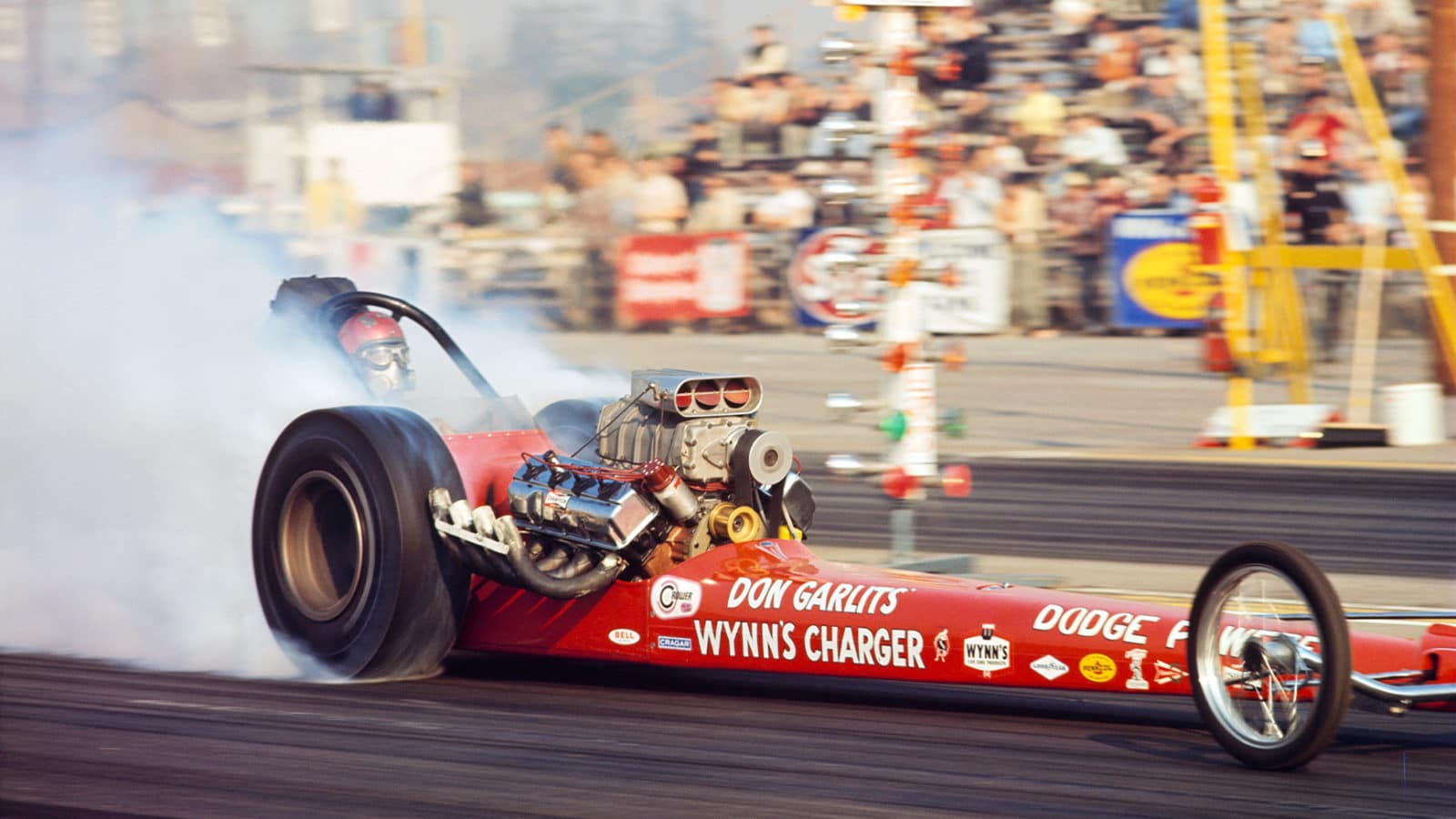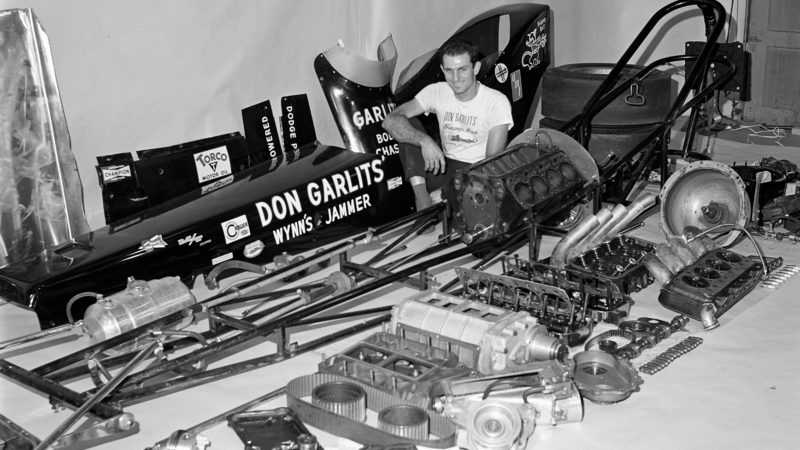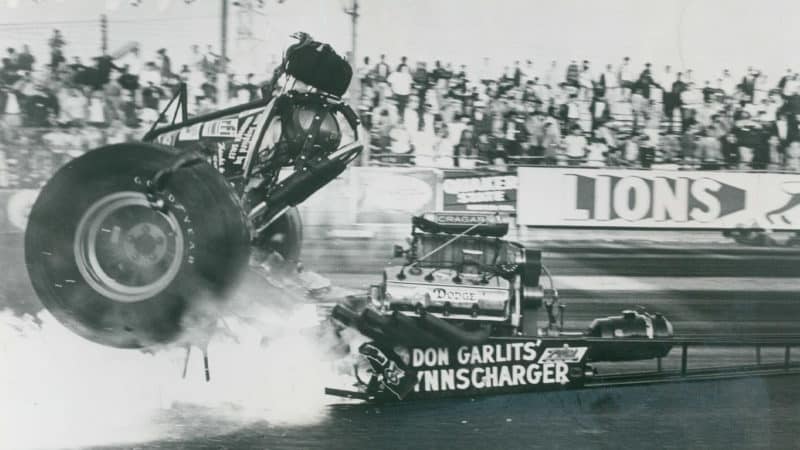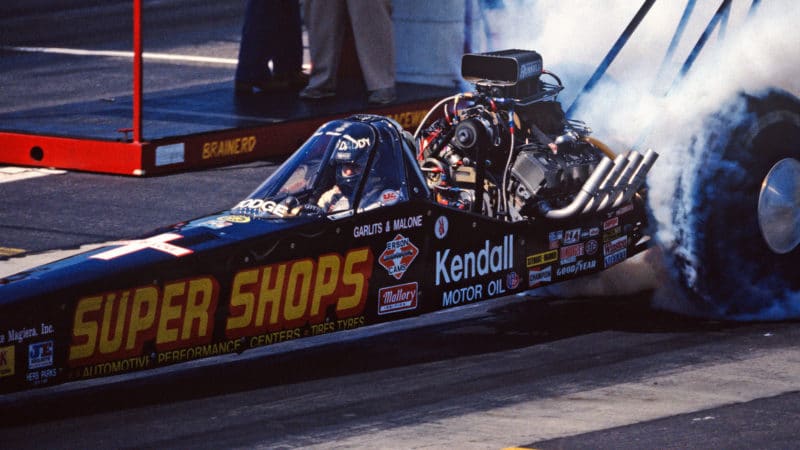Drag racer Don Garlits: Straight talkin'
The wider motor sport community doesn’t always give drag racing the recognition it deserves, but for more than 40 years Don Garlits has been a household name in his native America

The Enthusiast Network via Getty Images
Motor racing fans are a bit snobbish, a bit sniffy, about dragsters, aren’t they? The cars simply blast along in a straight line for a few seconds, after all. But there’s a whole lot more to the sport than that, as we are about to learn from the ‘Big Daddy’ of them all.

Better known to his fans as ‘Big Daddy’, or ‘Swamp Rat’ in deference to the dragsters he designed and built, Garlits discovered his passion for speed while hot-rodding back home in Florida.
“We all had hot-rods; cut down Coupes were the top of the line. I had a ’40 Ford with a Cadillac engine, and we went racing on an abandoned army base in Zephyrhills,” he says. “We marked out a quarter mile, went flat out all day long, no clocks, just a guy who flagged us. That was June 1950. We were just a bunch of black leather-jacketed hoodlums. I still wear mine in honour of where we started, the roots of it all.
“My mom wanted me to be an accountant, and I tried it, but I wasn’t happy and my stepfather gave me some good advice. He said. ‘You gotta go through life doing what you love. You love cars, so go do it. Your mom doesn’t run your life, so be there before they open the doors, get in there when they open and they’ll come and get you when it’s time to go home. That’s what’s it’s like to love your job’. And that’s how it was. I took a cut in pay to work in a bodyshop and my girlfriend never spoke to me again. I married the right one. My wife looked after the business – you gotta get that right.”

Garlits in 1964, mid-build with his Wynn’s Jammer Dragster
The Enthusiast Network via Getty Images
It wasn’t until 1964 that Garlits began to make his mark on the strips. The sport was in its infancy, he’d built up a garage business (‘Don’s Speed Shop’) and then in ’64 won the US Nationals at Indianapolis, set a new record at 200mph and came to Britain for the inaugural International Drag Festival.
“When I came home the phone was ringing off the hook,” he says with a grin. “My career was taking off. Every strip in the land wanted a piece of Big Daddy Garlits, running Wednesday night, Friday night, Saturday night and Sunday. Went home with a lotta money. I kept the businesses going, in case I got hurt, and we were busy, I tell ya. Building the Swamp Rats, driving, trucking all over the country. In California they were asking, ‘Who is this guy Dan Garbage from the swamps? We’ll show him some tricks’. So we took our first car, Swamp Rat 1, out to Bakersfield and beat ’em. We set some records – and all in a car built on 1931 Chevrolet frame rails.”
“When I see your F1 guys doing 200, hey, I’m getting bored at that kind of speed”
So what did Garlits have that the other hot-rodders didn’t? What makes the difference when it comes to going flat out in a straight line?
“Concentration. Reflexes. You gotta have those – and there’s no second chance, you win or you lose. In round-track racing you can make a mistake and get back into the fight. Drag racing is do or die. Reflexes and focus are everything. You have milliseconds to get it right: it’s tough, you need to be prepared. I kept pretty fit; I had friends who drank and smoked, most of ’em are dead now. Before a run I’d sit in the truck, take a power nap, come out fresh and sharp. You knew immediately if you screwed up, if you didn’t catch the light just right. You work in thousandths of a second; you gotta cut the light close as you can, that’s a key thing. A top baseball player sees the ball coming at 90mph, but he slows it down in his mind, sees the stitching on it and that’s how I saw the lights – not blink-blink-blink, but blink… blink… blink… like in slow motion. If that doesn’t happen you’re not gonna be a champion, you’re not top of the line.
“I always ran the quarter mile, and that 4.7 seconds seemed like a long time, plenty to do, a lot of stuff, feel the engine lift to the beat, look over at the other guy, watching stuff go by, but… oh yeah, your body is rearranged. You’re hit with 8g when you step on the gas, your brain crashes to the back of your skull, your liver crashes against your rib cage, and when you pop the chute you got 7g the other way. You take a hit, everything gets a little squiggly, you feel dazed, like somebody punched ya. It’s a young man’s sport and over time it can cause internal injuries. My hearing ain’t so good but I seem to have gotten away with it – hey, when you’re on the edge of the envelope things can go wrong. When you’re rewriting the book, testing new stuff, like when my transmission exploded in Swamp Rat Xlll in 1970, blew my right foot off, cut the car in two. You were riding a bomb – that’s why I never wanted to be in a car with bodywork on top. I mean, you got 25 gallons of nitro-methane, an 8000-horsepower engine and when they put that body down you know you’re in there for something, right? When those funny cars light up, they light up, a fire blows the whole body right off. So I started drawing up plans for putting the engine behind the driver, no bodywork. I’d go to the shop in my wheelchair, saw stuff up, make some new parts. That was to be Swamp Rat XlV and we won Top Fuel runs with it a year later.”

Exploding transmission injured Garlits in 1970
Denver Post via Getty Images
In 1987 Garlits nearly retired after suffering what drag racers call a ‘blowover’ at Chester and he was badly burned when his car was consumed in a ball of fire. He was one lucky man that day.
“That was frightening,” he says. My blower exploded, the first fire in drag racing, it nearly burned me to death. I thought about quitting, but my team’s other driver walked away and I had contracts to fulfill, so I got back in the car. First run after the accident was shaky, yeah, like after the blow-up in ’71, I had déjà vu at the start, didn’t catch the light, got beat, couldn’t run the other guy down. That didn’t happen again, just that once I got a bit shaky, a bit spooked, and missed the light by point something of a second.”
These days, as in so much motor sport, dragsters are spec cars, no room for innovation. Big Daddy, you will understand, doesn’t have much time for rigid specifications.
“I’m an innovator, always wanting to build new stuff, not resting on my success,” he says. “That’s why I put the engine in the back, that’s why I’m doing the electric dragster, something new and different. I was at The Speedway in 1963 when Parnelli Jones won, spewing oil all over the place, the last-but-one victory for a roadster. Jim Clark was behind him with a rear-engined car: they should have black-flagged Parnelli, but didn’t because they knew it was all over for the roadsters. I just remember thinking, ‘If that little rear-engined thing [Chapman’s Lotus] could run around there at 200mph with oil spraying on it, then surely I could go straight for 1320 feet?’ So I figured it out. Sure, we went off the strip a few times getting it right, took three months to get it where I wanted it. The Goodyear people said to me, ‘Don, don’t you know that every rear-engined car that was ever built turned right or left through the speed traps – we gotta lot of money in you and we don’t want to lose you’. And, you know, Americans love their traditions, so the guys at Chrysler, where we got our ram chargers, were saying, ‘Well, we reckon that Don Garlits has finally bitten off more than he can chew’. That made me even more determined, oh yeah. Once we slowed the steering down from what we’d used on the front-engined cars, we took it out and got close to a record run.
“These days you can’t make any changes, it’s against the rules. They’re spec cars like the Indy 500 racers. I talked to my good friend AJ [Foyt] about it at The Speedway this summer and every other word was a profanity… He’s a racer like me, a tough guy, and he says to me [imitating the great Texan], ‘These damn spec cars, they’re not frigging race cars no more’. I had lots of chances to go circuit racing like AJ, living near Daytona, but there was never any time. I’ve driven Daytona. It’s real fast, but when I see your F1 guys doing 200 on the straight, hey, I’m getting bored at that kind of speed. At 150 I’m ready to get out and walk. And all those buttons on the steering wheel… We don’t need that kinda stuff, we just steer it, the way it always was. I reckon the skills are identical. You just hone them differently and I guarantee that AJ could have been just as good as me in a Top Fuel dragster, I coulda been as good as him in a sprint car. It’s about having that killer instinct, that feel in the seat of your pants, knowing when to come back just a hair on the throttle.”

1970 explosion led to a rear-engined future – here at the 1986 NHRA Nationals
Alvis Upitis/Getty Images
Most of us, let’s be honest, have needed a little persuasion to go and see what these dragsters are all about. It’s something you should do at least once, if only to understand why places like Santa Pod attract such huge crowds. I know many people who just wish they hadn’t got so close.
Looking at me with that mischievous grin, Garlits says, “You wanna be where the noise doesn’t turn you inside out, say 100 feet down the strip. You get to see the whole thing, the speed, the full experience. You gotta be a bit mad to do it – only the fanatics remain, so they say. The sport has given me a great life. I’ve seen a lotta stuff, met some great people. In ’71, when we were winning everything, President Nixon asked Richard Petty and I to get out to Vietnam just before Christmas, talk to the troops, show some racing films, and I took a model of my black streamliner dragster. We’d get up at daybreak, get in the Hueys, fly to the front line. We’d be shot at from the ground, but it was only small arms and we had 30-calibre machine guns on those helicopters. The guys made a race track for us out in the woods and Petty and I would race each other in tanks. One time, Richard fell into a tank trap; it was a helluva thing getting him outta there. We spent time in hospitals, with all those young guys who’d been shot up. That was bad. I was against that war.”
Garlits’ legend and the sport of drag racing will be forever preserved in his Museum of Drag Racing in Ocala, Florida. We have barely scratched the surface of an extraordinary career but meeting the ‘Big Daddy’ has given me fresh respect for those who race in straight lines.
